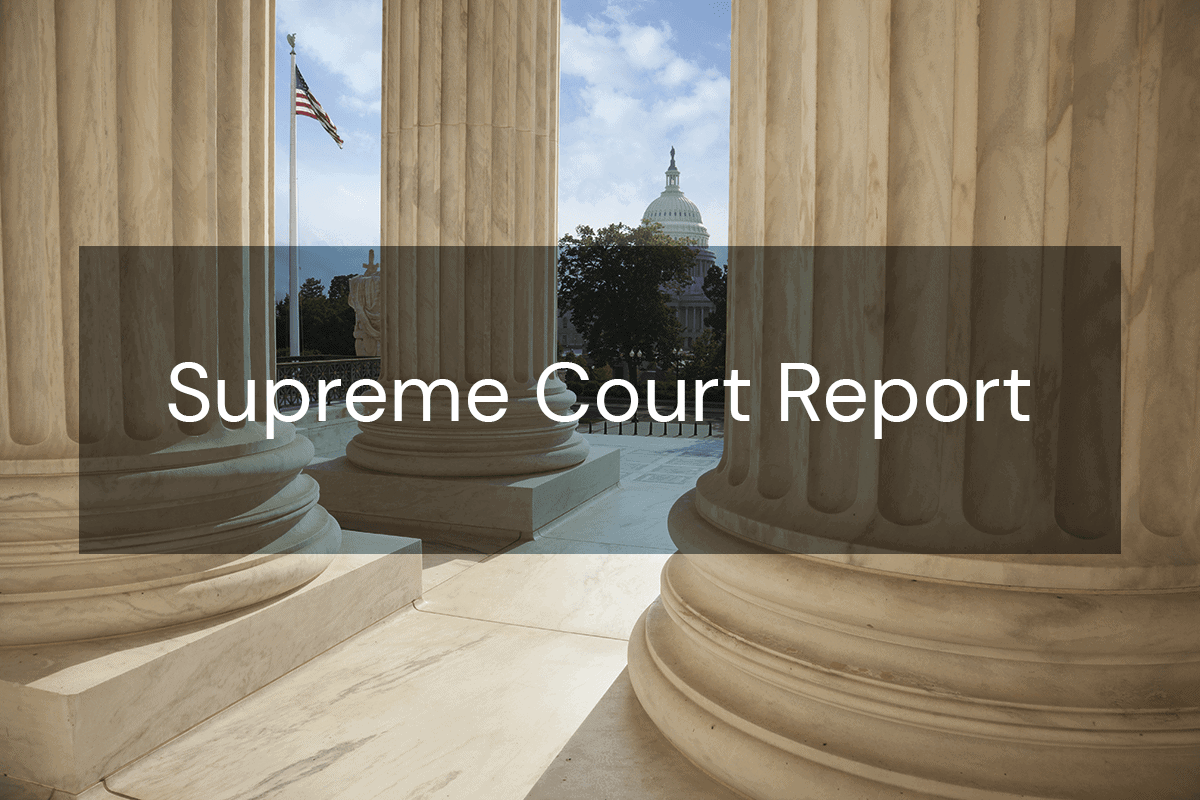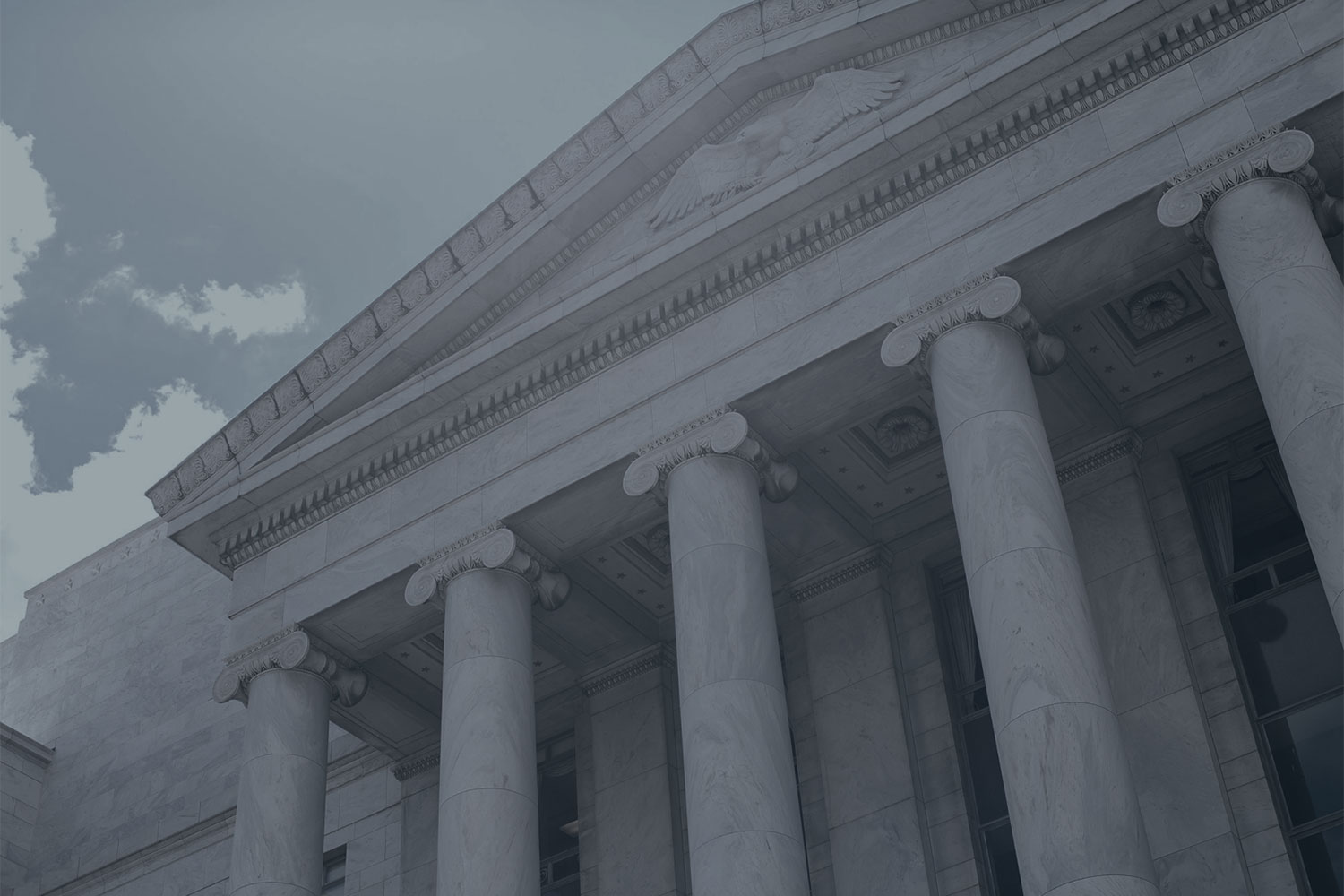Author

This Report summarizes opinions issued on June 23 and 24, 2022 (Part I).
Opinion: New York Rifle & Pistol Ass’n v. Bruen, 20-843
New York Rifle & Pistol Ass’n v. Bruen, 20-843. By a 6-3 vote, the Court held that New York State violates the Second Amendment by conditioning an individual’s right to carry a handgun for self-defense outside the home on showing “some additional special need.” In 1911, New York made it a crime to possess a handgun (concealed or otherwise) without a government-issued license. Later amendments clarified that a magistrate could issue such a license only if a person proved “good moral character” and “proper cause.” Today’s licensing scheme is similar, and still requires a showing of “proper cause”―which New York courts have interpreted to mean “a special need for self-protection distinguishable from that of the general community.” That typically means providing evidence “of particular threats, attacks or other extraordinary danger to personal safety.” Only six states have similar “may issue” licensing laws (in contrast to the ”shall issue” licensing laws that 43 states have). Two upstate adult citizens of New York who were denied licenses to carry handguns outside the home for self-defense filed suit, along with a public-interest group, alleging that the New York regime violated their Second and Fourteenth Amendment rights. The district court dismissed their complaint, and the Second Circuit affirmed based on its precedent, Kachalsky v. County of Westchester, 701 F.3d 81 (2012). Kachalsky ruled that New York’s “proper cause” requirement was “substantially related to the achievement of an important governmental interest.” In an opinion by Justice Thomas, the Court reversed and remanded.
The Court rejected the “two-step” framework that most federal courts of appeals had applied in assessing Second Amendment challenges. At the first step, the court would uphold the regulation if the state “establish[ed] that the challenged law regulates activity falling outside the scope of the right as originally understood.” At the second step, courts would assess “how close the law comes to the core of the Second Amendment right and the severity of the law’s burden on that right.” Courts would apply strict scrutiny if a “core” Second Amendment right were burdened, and intermediate scrutiny otherwise. The Court here held that the two-step approach “is one step too many.” Said the Court, District of Columbia v. Heller, 554 U.S. 570 (2008), and McDonald v. Chicago, 561 U.S. 742 (2010), “do not support applying means-end scrutiny in the Second Amendment context. Instead, the government must affirmatively prove that its firearm regulation is part of the historical tradition that delimits the outer bounds of the right to keep and bear arms.” The Court explained that Heller relied on history because “’it has always been widely understood that the Second Amendment . . . codified a pre-existing right.’” Heller therefore assessed the validity of a ban on handguns in the home “by scrutinizing whether it comported with history and tradition” and “expressly rejected the application of any ‘judge-empowering “interest-balancing inquiry.’” The Court stated that this approach “accords with how we protect other constitutional rights,” giving the Free Speech Clause and the Confrontation Clause as examples. Quoting McDonald, the Court acknowledged that “’[h]istorical analysis can be difficult”; but it is “‘more legitimate, and more administrable, than asking judges to ‘make difficult empirical judgments’ about ‘the costs and benefits of firearms restrictions.’”
The Court stated that its methodology should be “straightforward” in some cases: “For instance, when a challenged regulation addresses a general societal problem that has persisted since the 18th century, the lack of a distinctly similar historical regulation addressing that problem is relevant evidence that the challenged regulation is inconsistent with the Second Amendment. Likewise, if earlier generations addressed the societal problem, but did so through materially different means, that also could be evidence that a modern regulation is unconstitutional.” But “a more nuanced approach” may be needed for “cases implicating unprecedented societal concerns or dramatic technological changes.” In these cases, the “historical inquiry that courts must conduct will often involve reasoning by analogy―a commonplace task for any lawyer or judge.” The Court further explained that “Heller and McDonald point toward at least two metrics: how and why the regulations burden a law-abiding citizen’s right to armed self-defense.” Because “’individual self-defense is “the central component” of the Second Amendment right,’” “whether modern and historical regulations impose a comparable burden on the right of armed self-defense and whether that burden is comparably justified are ‘central’ considerations when engaging in an analogical inquiry.”
The Court next spent roughly 40 pages applying its text, history, and tradition methodology to New York’s proper-cause requirement. The Court found that the text of the Amendment plainly covers “carrying handguns publicly for self-defense” because Heller “confirmed that the right to ‘bear arms’ refers to the right to ‘wear, bear, or carry . . . upon the person or in the clothing or in a pocket’” for self-defense. Further, as noted, self-defense is “the central component of the [Second Amendment] right itself,” and “confrontation can surely take place outside the home.” The Court then turned to history and concluded that “apart from a handful of late-19th-century jurisdictions, the historical record compiled by respondents does not demonstrate a tradition of broadly prohibiting the public carry of commonly used firearms for self-defense. Nor is there any such historical tradition limiting public carry only to those law-abiding citizens who demonstrate a special need for self-defense. . . . [R]espondents have failed to meet their burden to identify an American tradition justifying New York’s proper-cause requirement. Under Heller’s text-and-history standard, the proper-cause requirement is therefore unconstitutional.” (Footnote omitted.) In a footnote, the Court cautioned that it is not suggesting that the 43 states’ “shall-issue” licensing regimes are unconstitutional.
In its historical analysis, the Court focused on four periods: (1) medieval to early modern England; (2) the American Colonies and the early Republic; (3) antebellum America; (4) Reconstruction; and (5) the late-19th and early-20th centuries. In doing so, the Court noted that “[h]istorical evidence that long predates” either the date the Second Amendment was adopted (1791) or the Fourteenth Amendment was adopted (1868) may be less relevant. The Court also said that evidence circa 1791 is more probative than evidence circa 1868, but then added that there is a scholarly debate on that score. It left that issue open, finding that “the public understanding of the right to keep and bear arms in both 1791 and 1868 was, for all relevant purposes, the same with respect to public carry.”
As to English history prior to the founding, the Court dismissed the 1328 Statute of Northampton―upon which New York heavily relied―as too old to be useful, particularly since handguns “did not appear in Europe until around the mid-1500s.” Instead, the Court found more relevant the “watershed” 1689 English Bill of Rights, which guaranteed that “Protestants . . . may have Arms for their Defence suitable to their Conditions, and as allowed by Law.” Turning “to the history of the Colonies and early Republic,” the Court found “little evidence of an early American practice of regulating public carry by the general public.” The Court noted that respondents pointed to only three restrictions on public carry, which it doubted were enough to “show a tradition of public-carry regulation.” And the Court found them inapposite on their own terms, two of which “merely codified the existing common-law offense of bearing arms to terrorize the people.” The Court found that three late-18th century and early-19th century statutes did likewise. Turning to antebellum laws, the Court acknowledged that “public-carry restrictions proliferate[d],” but found that “[n]one of these restrictions imposed a substantial burden on public carry analogous to the burden created by New York’s restrictive licensing regime.” According to the Court, common-law offenses during this time allowed people to “carry firearms publicly and peaceably”; statutory limitations on concealed carry “were constitutional only if they did not similarly prohibit open carry”; and surety statutes “were not bans on public carry, and they typically targeted only those threatening to do harm.”
The Court next concluded that “[e]vidence from around the adoption of the Fourteenth Amendment also fails to support respondents’ position.” The Court cited Dred Scott v. Sandford, 19 How. 393 (1857), as expressing the concern that if blacks were citizens they would have the right “to keep and carry arms wherever they went.” It cited Freedmen’s Bureau reports “describ[ing] how blacks used publicly carried weapons to defend themselves and their communities.” And it found “little innovation” in “Reconstruction-era state regulations . . . over the kinds of public-carry restrictions that had been commonplace in the early 19th century.” The Court acknowledged that Texas law was to the contrary and supported New York’s law, but found it an “outlier[].” Finally, the Court found a “slight uptick in gun regulation during the late 19th-century―principally in the Western Territories,” to be irrelevant. Heller stated that late 19th-century evidence provides little insight; territorial “improvisations” have little evidentiary weight; few people lived in the territories; “we do not know the basis of [these laws’] perceived legality”; and these restrictions were “short lived.” All told, “[a]part from a few late-19th-century outlier jurisdictions, American governments simply have not broadly prohibited the public carry of commonly used firearms for personal defense.” The Court closed by noting that “[w]e know of no other constitutional right that an individual may exercise only after demonstrating to a government official some special need.”
Justice Alito filed a concurring opinion questioning the relevance of the dissent’s discussion of recent mass shootings, the use of guns to commit suicide, and children killed by guns, given that New York’s law would not have stopped them. Justice Alito emphasized that “[o]rdinary citizens frequently use firearms to protect themselves from criminal attack” (as recounted in some amicus briefs). Finally, he criticized means-end analysis, saying it “places no firm limits on the ability of judges to sustain any law restricting the possession or use of a gun.” Justice Kavanaugh filed a concurring opinion that Chief Justice Roberts joined. He underscored that the Court’s decision does not call into question “shall issue” regimes, and that Heller and McDonald expressly listed a number of longstanding gun regulations that they do not call into question. Justice Barrett also filed a concurring opinion to state that “the Court does not conclusively determine the manner and circumstances in which postratification practice may bear on the original meaning of the Constitution” or “whether courts should primarily rely on the prevailing understanding of an individual right when the Fourteenth Amendment was ratified in 1868 or when the Bill of Rights was ratified in 1791.” (Internal quotation mark omitted.)
Justice Breyer filed a dissenting opinion, which Justices Sotomayor and Kagan joined. The dissent began by discussing the “severity” of “the serious problem of gun violence,” providing statistics and examples, including of recent mass shootings. In the dissent’s view, balancing lawful uses of guns “against the dangers of firearms is primarily the responsibility of elected bodies, such as legislatures,” which are better positioned to consider “facts, statistics, expert opinions, predictive judgments, relevant values, and a host of other circumstances.” Justice Breyer stated that the Second Amendment allows states to address gun violence, yet the majority opinion “leaves States without the ability to” do so. The dissent next criticized the Court for resolving this case without an evidentiary record, including on “[h]ow ‘demanding’ is the proper cause standard in practice.” Justice Breyer noted that until the 1980s most states operated “may issue” regimes, and that even today “may issue” states account for a quarter of the nation’s population. He pointed out that the “may issue” states are densely populated, and rely on data showing “that stricter gun regulations are associated with lower rates of firearm-related death and injury.”
Turning to methodology, the dissent insisted that Heller did not reject means-end scrutiny. And it pointed out that judges “regularly use means-end scrutiny, including both strict and intermediate scrutiny, when they interpret or apply the First Amendment.” In particular, “if conduct falls within a category of protected speech, we then use means-end scrutiny to determine whether a challenged regulation unconstitutionally burdens that speech.” Justice Breyer insisted that the Court “regularly uses means-end scrutiny in cases involving other constitutional provisions,” and that it is the Court’s “adoption of a rigid history-only approach that is anomalous.” He also called that approach “deeply impractical”: lower courts will struggle to apply it for “[j]udges are far less accustomed to resolving difficult historical questions”; and “will the Court’s approach permit judges to reach the outcomes they prefer and then cloak those outcomes in the language of history?” The dissent said that the majority opinion provides little guidance to lower courts, for example, by not saying how many cases or laws constitute mere “outliers” and for “not say[ing] what ‘representative historical analogue, short of a ‘twin’ or a ‘dead ringer’ would suffice.” Beyond that, the dissent stated that “historical evidence will often fail to provide clear answers to difficult questions,” “that history will be an especially inadequate tool when it comes to modern cases presenting modern problems,” and that “analogical reasoning” will prove difficult to employ in those cases.
Finally, Justice Breyer turned to history and reached a different conclusion than the majority. In the dissent’s view, “[t]he historical evidence reveals a 700-year Anglo-American tradition of regulating the public carriage of firearms in general, and concealed or concealable firearms in particular.” The dissent found the 1328 Statute of Northampton―which strictly limited the public carrying of arms―directly relevant for it “remained in force for hundreds of years, well into the 18th century” and formed the model for restrictions enacted by several colonies and states. The dissent further found that the Statute of Northampton “was far from the only English restriction on firearms or their carriage.” Turning to the colonies, the dissent pointed to three colonies that restricted public carry and found no basis to dismiss them as outliers. The dissent stated that “[t]he tradition of regulations restricting public carriage of firearms . . . continue into the founding era,” pointing to Virginia and North Carolina statutes and several other states’ statutes passed shortly after the founding. Justice Breyer disagreed that many of these statutes merely limited public carriage in a manner likely to terrify (as the majority found). Continuing, the dissent insisted that “many States and Territories passed bans on concealed carriage or on any carriage . . . of certain concealable weapons” in the 19th century. And the dissent found that the surety laws, like New York’s proper cause requirement, “conditioned public carriage in at least some circumstances on a special showing of need.”
Justice Breyer stated that “[a]fter the Civil War, public carriage of firearms remained subject to extensive regulation,” pointing to the laws of Texas and various territories. And he observed that New York’s law is well over 100 years old, giving “it a longer historical pedigree than at least three of the four types of firearms regulations that Heller identified as ‘presumptively lawful.’” The dissent closed its historical discussion by faulting the majority for “discount[ing] the historical evidence’s persuasive force,” always finding some reason for doing so, whether it be because the laws were too old, too new, too short-lived, etc. The dissent closed by saying that the uncertainty in the historical record counsels in favor of applying intermediate scrutiny. And the dissent agreed with the Second Circuit in Kachalsky that (1) “New York has substantial, indeed compelling, governmental interests in public safety and crime prevention,” and (2) “no less restrictive, but equally effective, alternative” exists.




